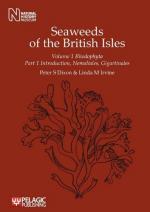|
This section contains 303 words (approx. 2 pages at 300 words per page) |
Rhyolite is an aphanitic volcanic rock with the equivalent mineralogical composition of granite. Rhyolite contains less than 5% phenocrysts, or mineral grains visible without magnification. The rest of the more than 95% of the rock consists of a ground mass too fine to discern without magnification. This texture is the result of the rapid cooling of extruded lava, which does not allow sufficient time for larger crystals to grow.
The mineralogical composition of rhyolite is defined as containing mostly quartz and feldspar with a total silica content of more than 68%. Quartz in rhyolite may be as low as 10% but is usually present in amounts of 25% to 30%. Feldspars often comprise 50% to 70% of rhyolite, with potassium feldspar present in at least twice the amount of plagioclase feldspar. Ferromagnesian, or dark, minerals are rare as phenocrysts, being mostly biotite when present. Trace accessory minerals may also include muscovite, pyroxenes, amphiboles, and oxides.
Rhyolite often appears very uniform in texture, although lava flow structures may be evident. They range in color from white to gray to pink. Due to the fine grained nature, the differentiation of rhyolite from aphanitic rocks of differing composition is not always conclusive based on color alone, but any light colored volcanic aphanitic rock is likely to be a rhyolite.
The high silica content of rhyolite creates a high viscosity lava, or one that is strongly resistance to flow. The viscous lava tends to build up volcanic gases instead of allowing them to escape. Eruptions of rhyolite can be highly explosive due to the spontaneous release of large amounts of trapped gases. This accounts for some of the very quickly cooled textural variations of rhyolite. For example, obsidian is a pure volcanic glass of rhyolitic composition and pumice is rhyolite glass that has cooled in the form of gas bubbles.
See Also
|
This section contains 303 words (approx. 2 pages at 300 words per page) |


